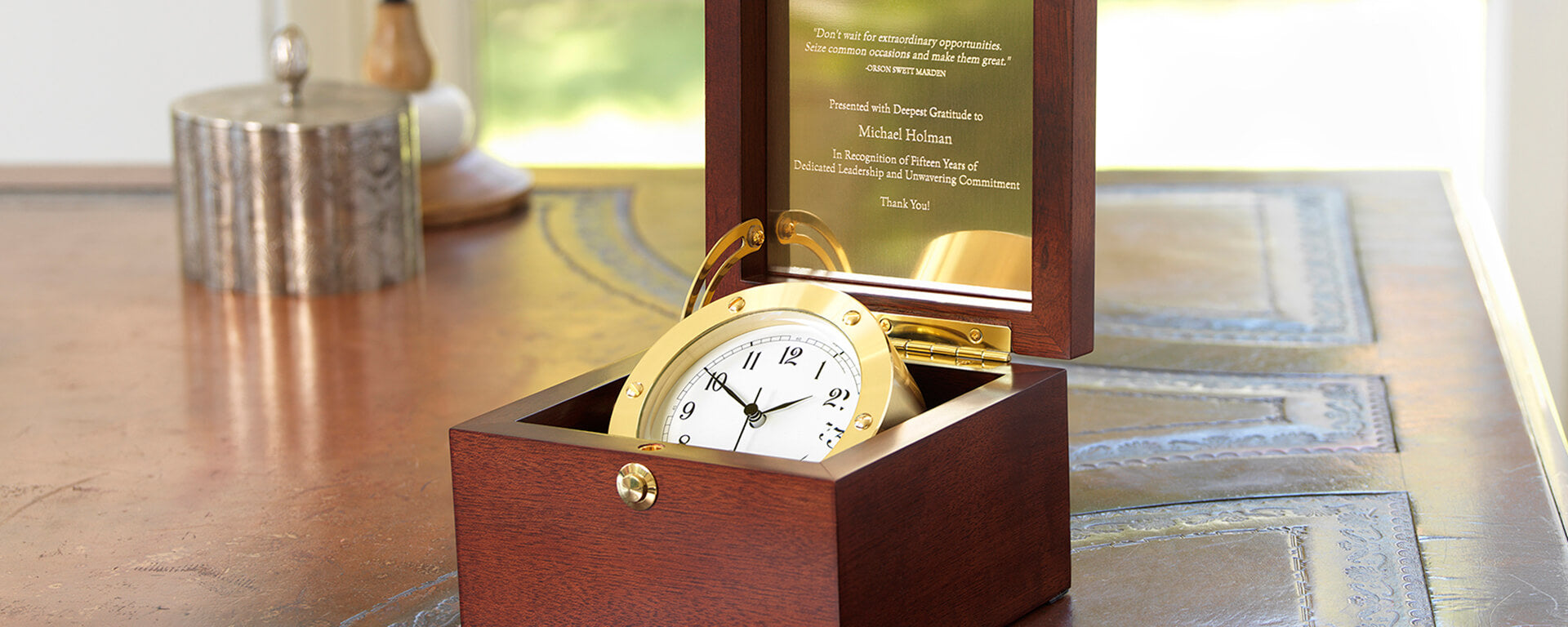Masterpieces in Motion: Exploring Chelsea Clock's Mechanical Wonders
For well over a century, Chelsea Clock has been recognized as the leading American manufacturer of mechanical clocks. Though many modern customers seek electric quartz clocks, there are still people who prefer the fine style and traditional accuracy of a mechanical timepiece. Our Ship's Bell clocks are still 100% mechanical timepieces, and enthusiasts can purchase a variety of vintage mechanical clocks that still keep perfect time.
We've discussed before how a mechanical clock works. But how does this apply to the Chelsea Clock catalog? Join us as we explore our most fascinating mechanical clocks past and present.

Ship's Bell Clock
The Ship's Bell nautical clock was patented in 1900, and not a thing has changed about its design since then. Whether you're purchasing a brand-new Ship's Bell or an antique, they have a mechanical movement that is warranted for 5 years. In the case of the Ship's Bell, the movement works two-fold. Not only does it include the regular mechanism for advancing the clock hands, but it also has a striking mechanism for the chimes. The intricate movement causes a small hammer to strike the bell on a predetermined cycle that follows the mariner watch code. This requires hundreds of precision brass parts to keep everything working in sync.

Marine Mechanical Clocks
For decades, Chelsea Clock was known for our mechanical marine clocks which were used by the U.S. government and its various contractors. We've even produced some in more recent times, such as this 2006 Mechanical Radio Room Clock that we made for NOAA chart supplier Baker Lyman and Co. These clocks use what we call the 12E movement. Developed in the early 1900s, this time-only mechanism was a landmark. While many mechanical clocks of the time were off by up to three minutes a day, a 12E clock was accurate within three seconds per day - that's more than a 5,000% improvement.
The 12E movement has been the heartbeat of numerous marine clocks, including our original WWII Navy engine room clocks and Coast Guard radio room clocks. One notable aspect of the movement is that it can be adapted to 12-hour or 24-hour clock dials, making it even.

Other Chelsea Mechanical Clocks
Chelsea Clock has utilized several other mechanical movements over the decades. One of our early nautical timepieces was the Model E Eight-Day Marine Clock. This had a seven-jewel movement that predated the development of the 12E. Though not as accurate, it was impressive by the standards of the early 1900s.
Another fascinating mechanical timepiece is the Special Grand House Strike Clock. This is essentially a modified version of the Ship's Bell movement. It also has 11 jewels and a striking mechanism like the Ship's Bell, though the striking sound is much different.
Finally, there is the Model F movement seen on the Pilot House clock and variations such as the Wardroom Clock. This non-magnetic movement had 7 or 11 jewels depending on the clock and was accurate for up to eight days. However, unlike marine clocks that had round movement plates, the Pilot House plates were rectangular.








